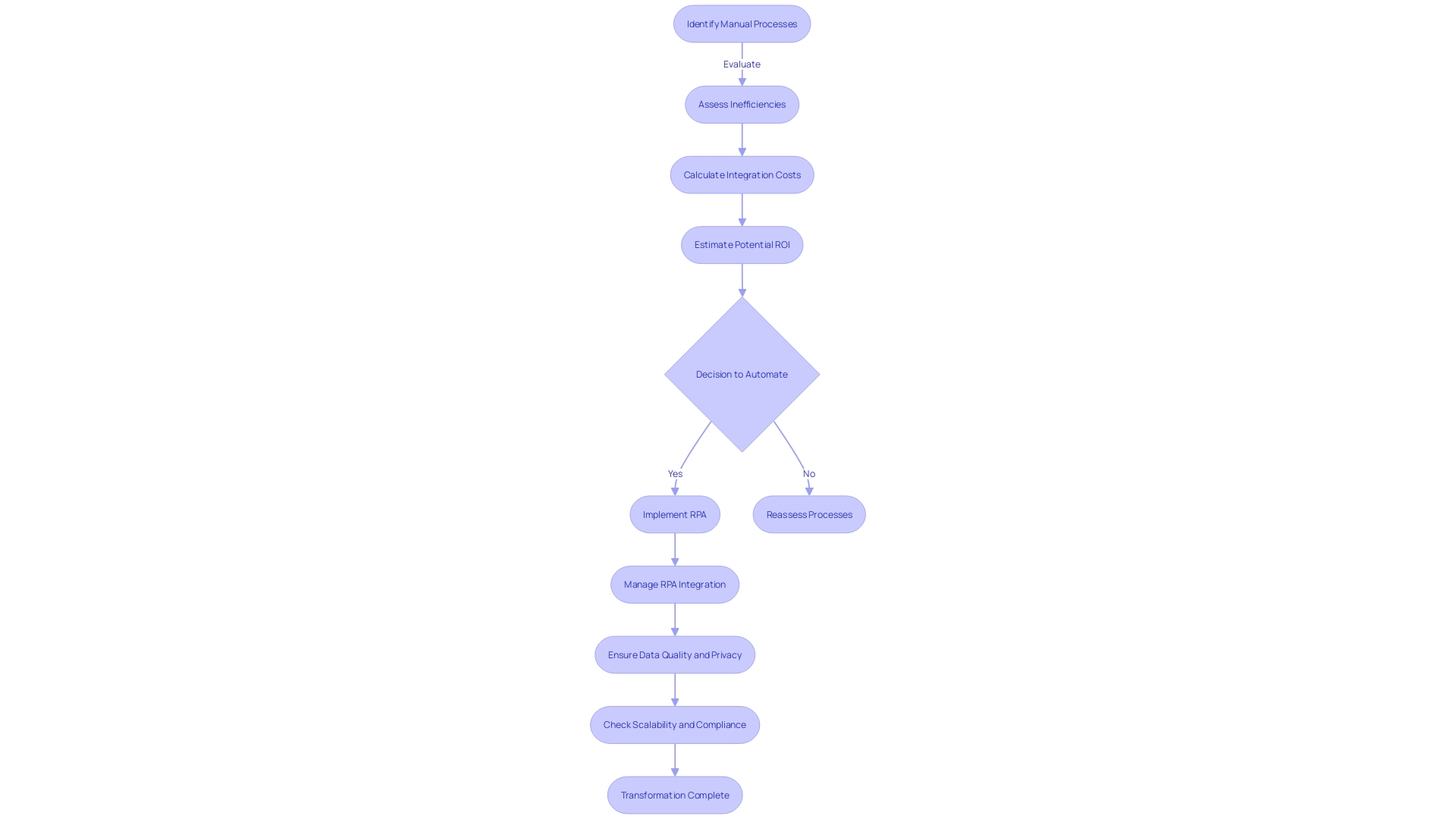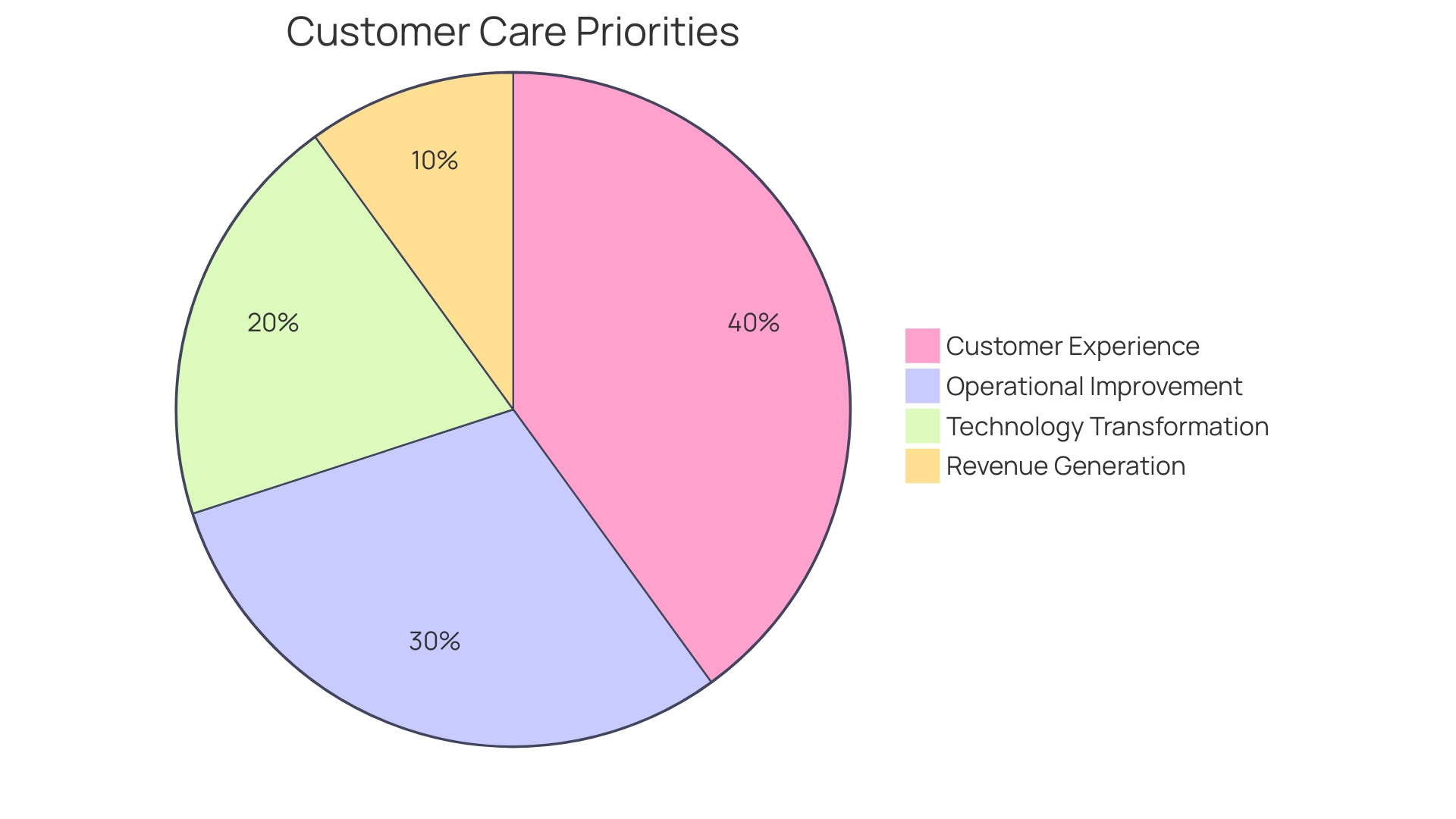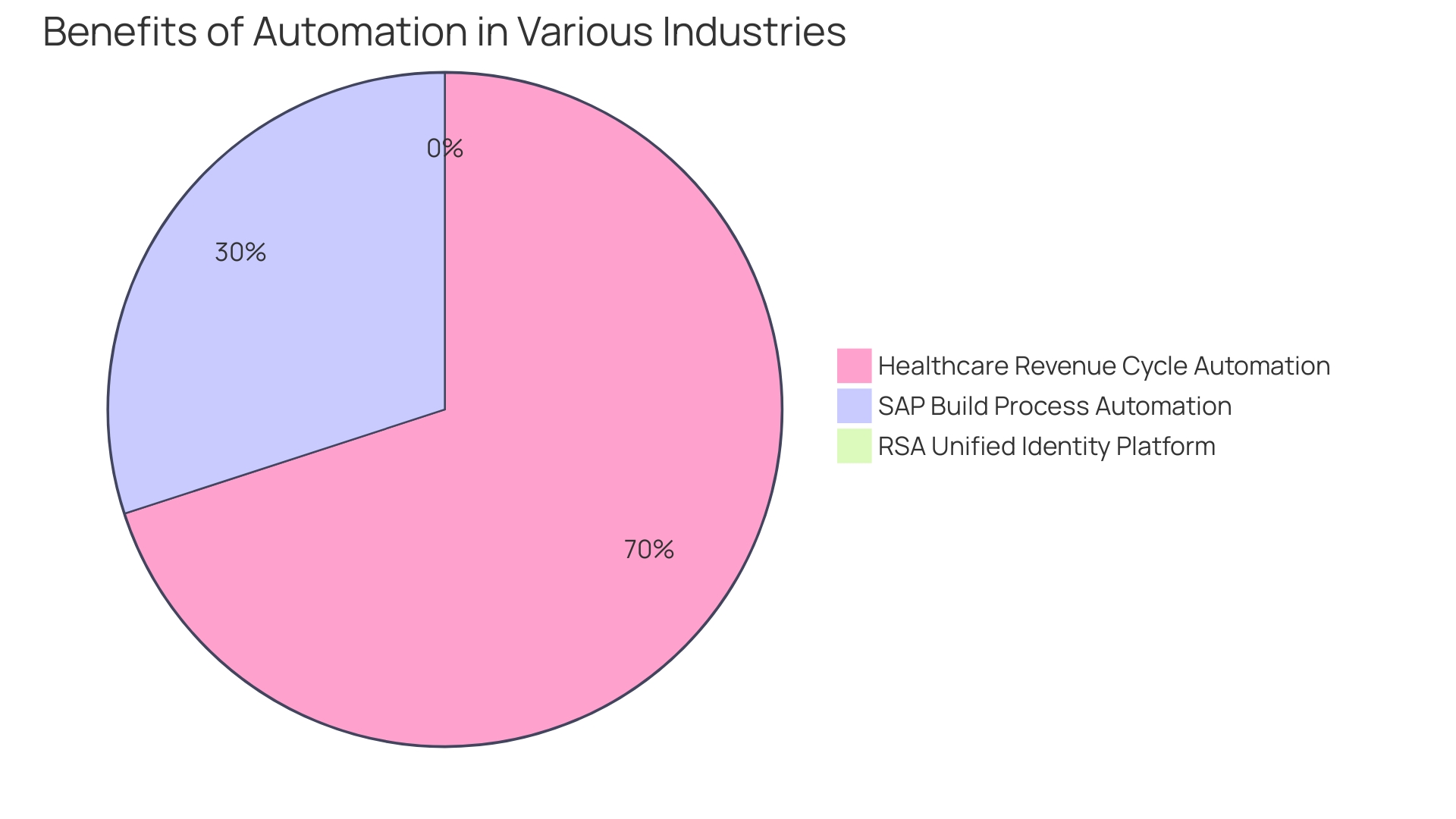Introduction
Robotic Process Automation (RPA) is revolutionizing the insurance industry by enhancing efficiency and accuracy across various key areas. From policy management to regulatory compliance, claims processing, customer service automation, and underwriting and risk assessment, RPA technology is driving significant transformation. This article explores how insurance companies like Hiscox and Medien Hub Bremen-Nordwest are leveraging RPA to streamline operations, improve customer satisfaction, and achieve sustainable growth.
With the potential to reduce complexity, enhance transparency, and deliver seamless customer experiences, RPA is proving to be a game-changer in the insurance sector. Stay tuned to discover the wide-ranging benefits and strategic implications of adopting RPA in this dynamic and rapidly evolving digital landscape.
Policy Management
Robotic Process Automation (RPA) is transforming the insurance industry by enhancing the efficiency and accuracy of policy management. RPA technology enables the seamless extraction and validation of data from diverse sources, ensuring policy details are updated with precision. Insurance firms like Hiscox are leveraging RPA to manage burgeoning client communications, reducing response times by automating repetitive email processing tasks.
This not only bolsters customer satisfaction but also alleviates the workload on service teams, allowing them to concentrate on providing personalized responses where required.
In a similar vein, Medien Hub Bremen-Nordwest experienced significant improvements by adopting an AI platform with RPA capabilities. The result was an immediate enhancement in customer complaint processing - a task that previously incurred lengthy wait times.
These advancements are part of a broader trend where companies, such as Prudential, utilize AI to expedite the policy buying process, reducing timeframes from over an hour to just 25 minutes. This is achieved through online platforms that eliminate the need for multiple physical signatures, greatly enhancing customer experience.
RPA's potential extends to the healthcare sector, where it's cutting down patient wait times and streamlining data retrieval, demonstrating the versatile applications of this technology. Hiscox's Process and Operations Manager, Guilherme Batista, emphasizes the strategic significance of RPA in achieving sustainable growth without equivalently increasing operational expenses.
As the insurance industry navigates the challenges of complex billing processes and administrative costs, RPA stands out as a solution that can introduce standardization and digital adjudication, thus reducing complexity and enhancing transparency. The deployment of RPA is not just about embracing technology; it’s about strategic modernization, ensuring that every automated process aligns with the company's goals for efficiency and growth.
Regulatory Compliance
Robotic Process Automation (RPA) is revolutionizing the insurance industry by streamlining compliance-related processes. This technology enables insurers to conduct data validation, risk assessments, and reporting with unprecedented precision and efficiency. RPA tools are programmed to automatically check for compliance, stay updated with regulatory changes, and generate accurate reports swiftly, thereby mitigating the risk of non-compliance and conserving valuable time and resources.
Leaders in the insurance industry must judiciously consider the modernization benefits and challenges RPA presents. Determining which specific manual processes are ripe for automation, identifying inefficiencies, and calculating the integration costs and potential ROI of RPA software are fundamental steps. Implementing RPA requires a strategic approach, taking into account the nuances of the regulatory landscape, which is as dynamic and complex as ever.
The insurance sector is not alone in facing these challenges; the digital health solutions sector also encounters a complicated regulatory environment. The projected growth of the Software as a Medical Device (SaMD) market, at a compound annual growth rate of about 52% from 2023 to 2028, underlines the urgency for regulatory professionals to adeptly navigate this terrain.
With 99% of global insurance organizations set to overhaul their core technology systems, the implications for compliance are significant. The integration of RPA must be carefully managed to ensure data quality, privacy, and scalability meet the industry's stringent standards. It's a transformative time for insurance companies, as they balance innovation with the imperative to uphold rigorous compliance in a rapidly evolving digital landscape.

Claims Processing
Streamlining claims processing remains a critical challenge for the insurance industry, with companies like Hiscox experiencing increased pressure due to growing demand. By harnessing Robotic Process Automation (RPA), insurers are transforming this traditionally labor-intensive and error-prone task. RPA enables the swift extraction of data from claim forms, meticulous validation of policy details, and precise calculation of claim amounts.
The integration of RPA with CRM systems further refines the claims experience by delivering a cohesive and efficient service.
Recent reports, including a survey by Sollers Consulting and Ipsos, underscore the urgency for insurers to enhance claims automation, with a staggering 52% to 63% of customers citing quick processing as a top expectation. Notably, 63% of UK customers prioritize speed in claims handling, a sentiment echoed in Germany, Poland, and France, where rapid processing trumps even the compensation amount in driving customer satisfaction.
The adoption of generative artificial intelligence (GenAI) within property and casualty insurance exemplifies the industry's commitment to innovation and customer service. Despite the initial skepticism surrounding GenAI, insurers who embraced this technology are witnessing tangible benefits, such as improved customer experiences during First Notice of Loss intake and more effective data analysis. Leaders in the industry are setting a precedent for others by demonstrating the practical value of AI in cutting through complexities and achieving measurable outcomes.
Insurance companies are increasingly recognizing the necessity of a fail-fast approach, cultural awareness, and ethical transparency when implementing digital tools. These principles are essential as the industry strives to be at the forefront of technological advancements and respond effectively to customer demands.

Customer Service Automation
Robotic Process Automation (RPA) is increasingly becoming a game-changer in the insurance sector, particularly in customer service. By harnessing the capabilities of RPA, insurance companies are able to offer chatbots that can manage customer inquiries with precision, supply policy information promptly, and address basic queries related to claims efficiently. This level of automation not only slashes customer wait times but also boosts the accuracy of responses, thereby elevating the overall customer experience.
The advantages of RPA extend beyond customer-facing functions into the realm of back-office operations. Tasks such as document verification and updating customer data can be streamlined through RPA, allowing for a more efficient and tailored customer service approach. This is pivotal in an industry where a recent survey by Sollers Consulting and Ipsos indicates a strong customer demand for swift claims processing — a sentiment echoed by 52% to 63% of customers across various countries.
The significance of RPA in improving customer service is underscored by the positive financial outcomes experienced by companies that prioritize customer experience (CX). According to McKinsey's research, CX leaders in the insurance industry consistently outperform their peers, demonstrating higher total shareholder returns, revenue growth, and improved satisfaction among employees and agents.
Furthermore, the success of one European telecom group in implementing strategic data governance and data engineering highlights the potential benefits of RPA. The group's ability to deploy new use cases rapidly across different countries serves as a testament to the efficiency gains possible with RPA.
In essence, RPA is a powerful tool for the insurance industry, capable of transforming customer interactions and back-office processes alike. By leveraging this technology, insurers can not only meet but exceed customer expectations, ensuring satisfaction and loyalty while also achieving operational excellence.

Underwriting and Risk Assessment
The insurance industry is witnessing a paradigm shift with the integration of Robotic Process Automation (RPA) into underwriting and risk assessment. These traditionally time-consuming tasks are being revolutionized by RPA's capability to swiftly gather and analyze data, providing a robust platform for accurate risk scoring. This leap in technology facilitates expedited decision-making in underwriting, while maintaining precision through the meticulous processing of large datasets.
The result is an unprecedented improvement in efficiency and a considerable reduction in operational costs.
In the domain of insurance adjustment, especially in the aftermath of events like fires, the role of RPA becomes even more pronounced. Adjusters, tasked with the evaluation and settlement of claims, benefit from automated processes that can incorporate visual evidence such as images, which are crucial for assessing the extent of damage. This not only aids in the accurate documentation and validation of claims but also streamlines the entire claims process, allowing for faster resolution and better customer satisfaction.
Prominent industry leaders are already harnessing the power of RPA, with Arch Insurance North America offering a glimpse into the future of automated underwriting solutions. They, along with others in the sector, experience enhanced accuracy in risk assessment and premium determination through the use of AI and machine learning algorithms. These technologies are redefining the landscape, enabling insurers to analyze complex data like medical records and lifestyle information with remarkable speed and precision.
The insurance community is taking note of these advancements, as evidenced by the discussions in platforms like Source@RPC, which focus on the legal implications and management of technology risks. The impending regulations, such as the EU's Artificial Intelligence Act, underscore the importance of proper procurement and contractual protections in adopting these technologies. As the pace of change accelerates, the insurance sector is poised to continue its journey towards a more automated and efficient future, propelled by the innovative use of RPA in underwriting and risk assessment.

Conclusion
In conclusion, Robotic Process Automation (RPA) is revolutionizing the insurance industry across key areas such as policy management, regulatory compliance, claims processing, customer service automation, and underwriting and risk assessment. Insurance companies like Hiscox and Medien Hub Bremen-Nordwest are leveraging RPA to streamline operations, improve customer satisfaction, and achieve sustainable growth.
RPA technology enables seamless data extraction and validation, reducing response times and enhancing customer satisfaction. It streamlines regulatory compliance processes, ensuring accurate risk assessments and reporting. By harnessing RPA, insurers can swiftly extract and validate data from claim forms, calculate claim amounts accurately, and integrate with CRM systems for a cohesive claims experience.
Customer service automation is transformed with RPA, offering efficient chatbots that provide prompt policy information and streamline back-office operations. The positive financial outcomes of prioritizing customer experience highlight the significance of RPA in improving overall satisfaction and loyalty.
RPA revolutionizes underwriting and risk assessment, enabling accurate risk scoring and expedited decision-making. It aids insurance adjustment processes, incorporating visual evidence for accurate claims documentation and validation.
In summary, RPA is a game-changer in the insurance sector, driving efficiency, accuracy, and customer satisfaction. Insurance companies must strategically embrace RPA to achieve sustainable growth, navigate regulations, and respond effectively to customer demands. RPA empowers insurers to streamline operations, enhance customer experiences, and stay ahead in the digital landscape.





